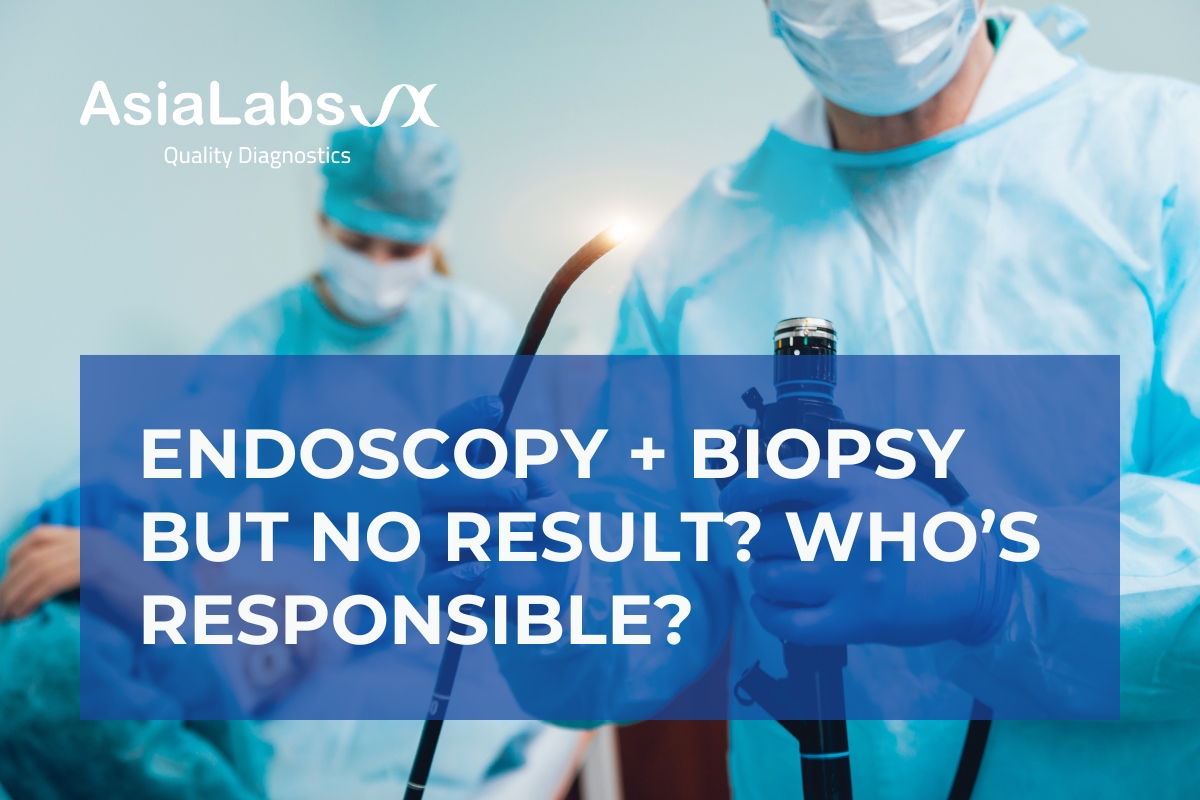Biopsies are a cornerstone of modern medicine, particularly in the diagnosis of precancerous or cancerous lesions. During procedures like gastrointestinal (GI) endoscopy or cervical screening, taking a tissue sample is often the most definitive way to determine if a suspicious area is benign, precancerous, or malignant. But what happens when a biopsy is taken—and the patient never receives a result? Who is responsible when this critical link in the diagnostic chain breaks down?
Unfortunately, this scenario is more common than many realize. Across clinics and hospitals, patients sometimes undergo endoscopies or other procedures, have tissue samples taken, and then wait in vain for results that never arrive. This isn’t just a frustrating administrative hiccup—it’s a potential threat to patient safety and trust.
Where Does the Breakdown Occur?
The journey of a biopsy sample from collection to diagnosis is complex and involves multiple steps and stakeholders. When results go missing, the breakdown can happen at several points:
1. Lack of Standardized Workflow
Many clinics, especially those with limited resources or high patient volumes, lack a standardized, step-by-step protocol for handling biopsy samples. Without clear procedures, critical errors can occur:
-
Improper Fixation: If tissue isn’t immediately and correctly preserved in formalin, it can degrade, rendering it impossible to analyze.
-
Poor Labeling: Samples without clear, unique identifiers can be mixed up or lost.
-
Inadequate Tracking: Without a tracking system, it’s easy for samples to be misplaced or overlooked as they move from the clinic to the pathology lab.
2. Issues with Pathology Partners
Even if a clinic handles the initial steps well, the process can falter during transport or analysis:
-
Delays in Transport: Biopsy samples must reach the pathology lab quickly and under the right conditions. Delays can compromise tissue quality.
-
Inadequate Storage: If samples are not stored at the correct temperature or in the right solution, they may become unusable.
-
Unreliable Pathology Labs: Not all labs have robust systems for logging, processing, and reporting on every sample. A lack of communication or accountability can leave clinics and patients in the dark.
3. Communication Gaps
Sometimes, the sample is processed and a result is generated—but the information never makes it back to the physician or patient. Poor communication, lost paperwork, or digital system failures can all contribute to this final, critical breakdown.
The Consequences: More Than Just Lost Results
When biopsy results go missing, the consequences are severe:
-
Delayed Diagnosis: Patients with cancer or precancerous changes may miss the window for early, life-saving treatment.
-
Repeat Procedures: Patients may need to undergo another invasive biopsy, increasing risk and anxiety.
-
Loss of Trust: Patients lose faith in their healthcare providers, potentially leading to disengagement from future care.
-
Legal Liability: Clinics and hospitals may face legal action for negligence or malpractice.
AsiaLabs: Closing the Gaps with Complete Traceability
At AsiaLabs, we believe that no patient should ever be left wondering about the outcome of a biopsy. That’s why we’ve built a fully traceable, end-to-end biopsy management system that eliminates the common points of failure.
Our Workflow: From Collection to Diagnosis
-
Barcode Tagging: Every biopsy sample is assigned a unique barcode at the moment of collection, ensuring it can be tracked throughout its journey.
-
Formalin Preservation: Samples are immediately fixed in formalin to preserve tissue integrity.
-
Secure Transport: We use temperature-controlled, secure containers to move samples rapidly from clinic to lab.
-
Automated Processing: In the lab, automated systems handle tissue processing, embedding, slicing, and staining with minimal human error.
-
Expert Slide Reading: Our team of experienced pathologists examines each sample, supported by digital imaging and AI-assisted analysis.
-
Digital Report Delivery: Results are uploaded to a secure portal, accessible to clinicians as soon as they’re ready.
Proactive Communication
We don’t wait for problems to arise. If a biopsy sample is not received at our lab within 24 hours of the procedure, we immediately notify the clinic. This allows for quick intervention—whether it’s tracking down a missing specimen or repeating a collection if necessary.
Full Visibility for Physicians
With our system, physicians have real-time access to the status of every biopsy sample. From collection to diagnosis, they can see where each specimen is, what stage it’s at, and when results are expected. This transparency not only improves efficiency but also builds patient trust.
No More Lost Specimens. No More Lost Trust.
The responsibility for delivering biopsy results doesn’t rest on any single person—it’s a shared obligation across the healthcare system. But with the right processes and technology, lost results can become a thing of the past.
At AsiaLabs, we’re committed to ensuring that every biopsy tells its story—promptly, accurately, and reliably. Because behind every sample is a patient waiting for answers, and nothing is more important than delivering those answers without delay.
When it comes to biopsies, the stakes are too high for anything less than a fully accountable, transparent system. With AsiaLabs, clinics and patients can rest assured: every sample is tracked, every result is delivered, and no one is left in the dark.

